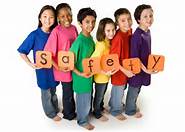As a parent, my child’s safety is always on my mind. With more and more people using the internet, the world becomes an even scarier place. There’s more reporting of crimes now and sexual abuse is not exempt. Last year I wrote a post on the subject and when I stumbled on a post on steps we could take to try to protect our children and prevent child sexual abuse, I just had to share it as a useful reminder.

How can we prevent child sexual abuse?
Create a family safety plan to protect children
If you are concerned about keeping your child safe from sexual abuse, this is your chance to create a safer environment and a support network for everyone in your family. Youngsters are immediately safer when parents and caregivers take the time to learn about sexual abuse and its warning signs.
We talk about risk factors – what puts someone at risk to sexually abuse a child but we must also talk about protective factors – the things a family can do to keep the family safer. Protective factors are the building blocks of your family. You can download a booklet to help you with creating a family safety plan here.
Parents and caregivers who make a commitment to speak up as soon as they have a concern, instead of waiting for certain evidence of harm, play an even more crucial role in a child’s safety. Here are some things that you and your family can do to protect children from sexual abuse:
Know the signs
- “Warning sign” is really just another way of saying “opportunity for prevention” – a chance for caring adults to recognise possible risk and to take action to protect children.
- Read more about warning signs.
- Remember, the most effective prevention takes place before there’s a child victim to heal or an offender to punish.
Open lines of communication
- Whether talking with a child, adolescent, or adult, about sexualised behaviours or your concerns, the conversation is just a beginning and not a one-time event.
- Let everyone in the family know it is OK to ask questions. It is important for adults to set the tone for everyone by talking about the range of healthy sexual behaviours and speaking up about sexual abuse.
- The NSPCC has developed a guide for parents and carers to use with children to help keep them safe. The Underwear Rule teaches children that their body belongs to them, they have a right to say no, and that they should tell an adult if they’re upset or worried. Download – the guide for adults. Download – the guide for adults to use with children.
- Using some of our suggested books to read with children can help you start some really important conversations. However, before you read them with your child read them through yourself first, so that you can judge if the information is appropriate for your child and so you are familiar with the story. Finally, see these stories as a springboard to further conversation, discussion and continued teaching and learning. Find the list here.
Educate everyone in the family
- Understand healthy sexual development in children as well as the sexual behaviours that may be of concern to you as a parent/carer.
- Learn the warning signs of a child who may have been hurt by sexual abuse as well as the warning signs in an adult, adolescent or child who may be touching a child in a sexual way. Your concerns may be about non-touching behaviours as well (e.g. showing pornography to a child).
- Teach children the proper names for body parts and what to do if someone tries to touch them in a sexual way. Remember to let young children know that no one has the right to touch their private parts (unless for medical reasons) and that they should not touch anyone else’s private parts.
Set clear family boundaries
- Talk about and set clear family boundaries with family members and with other adults who spend time around or supervise the children (e.g., if a child does not want to hug or kiss someone hello or goodbye then he or she can shake hands instead).
- If a child is not comfortable with a particular adult or older child then you or some other adult must let that person know (e.g., tell him or her that you don’t want your child to sit on his/her lap).
- As a child matures, boundaries within the home may need to change as well (e.g., knock on the door before entering the room of an adolescent).
Get safe adults involved
- Be sure that no one in your family is isolated. Identify one or more support people for every member of the family.
- Research shows that one of the key factors in a child’s resilience (ability to bounce back after stressful events) is that he/she had someone to talk with and confide in. Be a safe, responsible and consistent resource person for a child or adolescent.
- If someone is “too good to be true” then ask more questions – this friend or family member may not be a safe person for your child. Unfortunately, unconditional trust cannot protect children from harm.
Take sensible precautions with who has access to your children
- Be aware of who is paying attention to your children and who their friends are.
- Don’t ignore any unease you feel about people showing interest in your child.
Know your local resources and how to access them
- We have listed various resources to call/contact for advice, information and help on the Useful Links page.
- Learn about the agencies in your area. Know who to call to make a report if you learn that a child has been sexually abused.
Seek help and advice – you are not alone
- If you are concerned about the sexualised behaviours in a parent, cousin, sibling, friend, or neighbour, care enough to talk with them. If you are concerned about your own thoughts and feelings towards children, help is available.
- Call the Stop it Now! Helpline on 0808 1000 900 to learn more about the resources in your community.
- Make sure everyone knows that it’s OK to talk with you about what may have already happened – that you love them and will help them. For additional resources or for advice on developing your Family Safety Plan, call our Helpline on 0808 1000 900.
You can learn more about family safety and protecting children from harm by taking part in our learning seminars, follow this link to find out about our parent training sessions.
***
There you have it! What are your thoughts on this post on How can we prevent child sexual abuse? Create a family safety plan!? Do you have a family safety plan? How about any other tips to try to prevent child sexual abuse? Please leave a comment below.



![[Must Read] Hello! I’m Back :D](https://www.segilolasalami.co.uk/wp-content/uploads/2023/01/IMG-20220205-WA0008-150x150.jpg)
